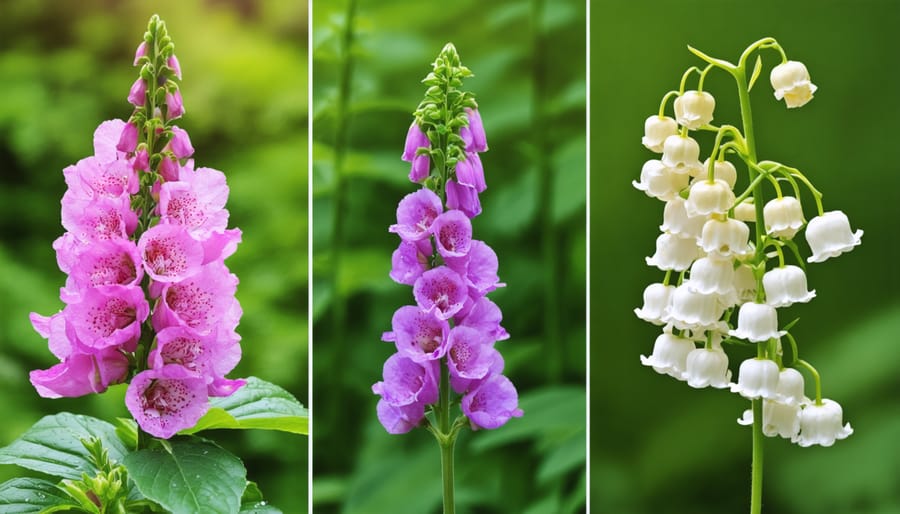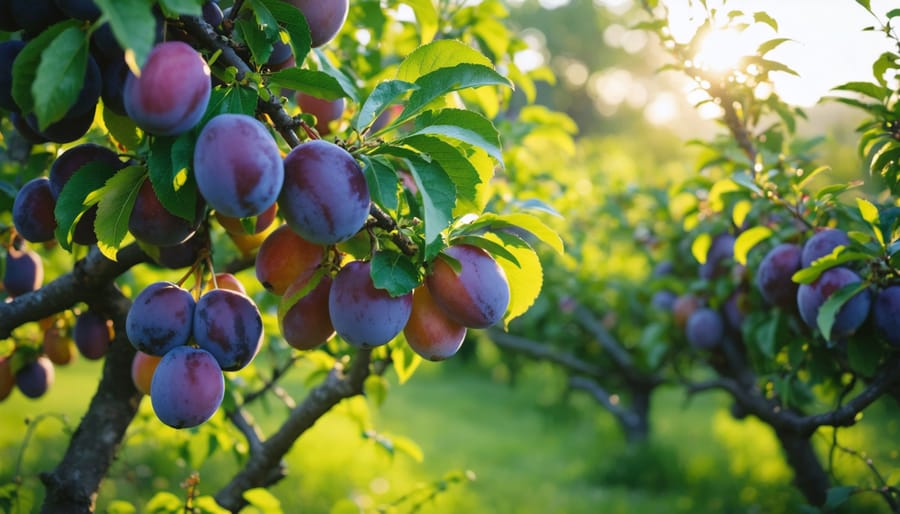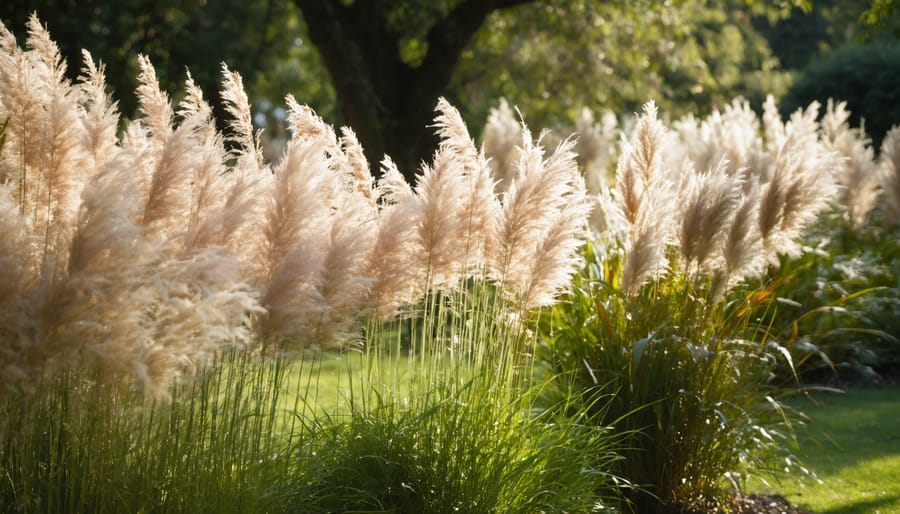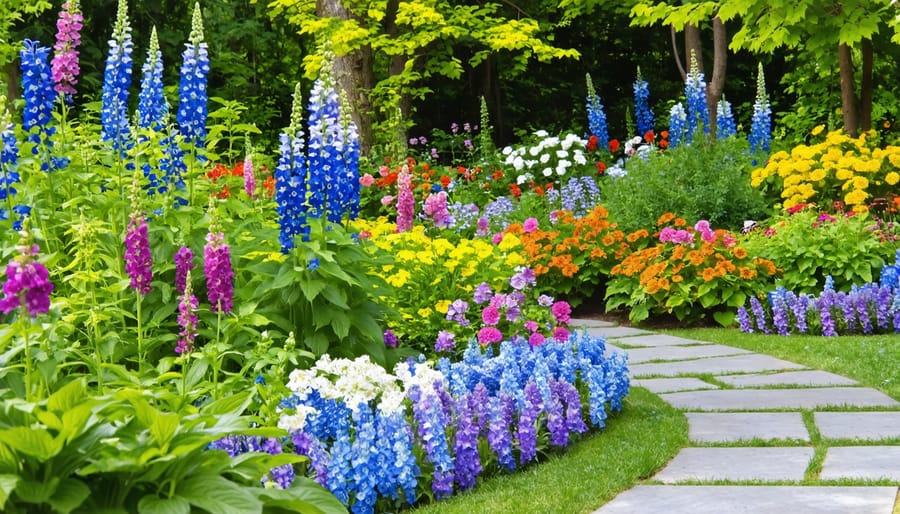Behind the stunning beauty of ornamental plants lies a hidden danger that every gardener must understand. From the elegant foxglove to the beloved lily of the valley, many of our most cherished garden specimens harbor toxic compounds that can pose serious risks to children, pets, and unsuspecting gardeners.
While these botanical beauties shouldn’t be banished from our landscapes, knowledge is our most powerful tool for creating safe and stunning gardens. Understanding which plants contain harmful substances, recognizing their symptoms, and implementing smart garden design strategies can help us enjoy their aesthetic appeal without compromising safety.
Whether you’re planning a new garden or reassessing your existing landscape, this guide will help you identify common poisonous ornamentals, understand their specific risks, and learn practical ways to incorporate them safely into your outdoor spaces. We’ll explore how to create beautiful, child-safe gardens while preserving the dramatic impact these fascinating plants bring to our landscapes.
By making informed choices about plant selection and placement, you can maintain a garden that’s both visually striking and secure for all who enjoy it.
Common Toxic Plants in Home Gardens
Flowering Favorites
Many beloved ornamental flowers harbor a hidden danger beneath their stunning appearance. Oleander, with its clusters of pink, white, or red blooms, is highly toxic in all parts, from its delicate petals to its stems. Even burning oleander can release dangerous fumes, so it’s crucial to handle this plant with caution.
Foxglove, known for its tall spikes of tubular flowers in purple, pink, and white, contains cardiac glycosides that affect heart function. While these compounds are actually used to make life-saving heart medications, the raw plant is dangerous if ingested. The most fascinating aspect of foxglove is how its beautiful blooms attract both pollinators and admirers, making it a garden paradox.
Lily of the valley, despite its dainty white bells and sweet fragrance, packs a powerful punch. All parts of this spring favorite contain cardiac glycosides similar to foxglove. What makes this plant particularly concerning is its tendency to spread rapidly through underground runners, potentially popping up in unexpected places.
For gardeners who love these classic beauties, don’t despair! You can still enjoy them safely by planting them in dedicated areas away from children’s play spaces and pet zones. Consider using decorative fencing or placing them in raised beds to create clear boundaries. Always wear gloves when handling these plants, and make sure to wash your hands thoroughly afterward.
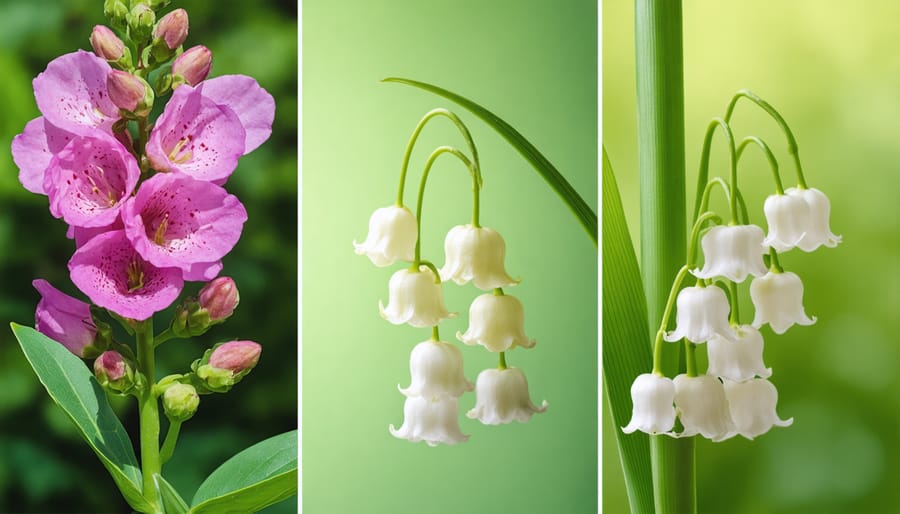
Popular Shrubs and Trees
While many ornamental plants add beauty to our gardens, some popular shrubs and trees can pose serious health risks. The rhododendron, with its stunning blooms, contains grayanotoxins in all parts of the plant, which can cause severe digestive issues and irregular heartbeat if ingested. When handling ornamental trees like these, always wear gloves and wash your hands thoroughly afterward.
The yew tree, commonly used in hedges and topiary, is particularly dangerous as all parts except the fleshy red aril around the seed are toxic. Even small amounts can cause serious cardiac problems, making it crucial to keep children and pets away from fallen branches or berries.
Angel’s trumpet (Brugmansia) is a show-stopping tropical beauty that contains dangerous levels of tropane alkaloids throughout the plant. Despite its enchanting hanging flowers, all parts of this plant can cause hallucinations, confusion, and severe illness if ingested.
Other notable mentions include the golden chain tree (Laburnum), whose yellow hanging flowers are as toxic as they are beautiful, and the oleander, which remains one of the most poisonous commonly grown ornamental plants. Remember, these plants can still be enjoyed in your garden – just maintain safe distances from play areas and educate family members about potential risks.
To keep your garden both beautiful and safe, consider placing warning signs near toxic plants and regularly check for fallen leaves or berries that might need cleaning up.
Identifying Toxic Plants
Visual Characteristics
When identifying potentially poisonous ornamental plants, several visual characteristics can serve as warning signs. Many toxic plants share common features, such as glossy or waxy leaves, which you’ll find on plants like oleander and lily of the valley. Berries are another key indicator – while not all colorful berries are toxic, bright red, white, or black berries should be approached with caution, especially those growing in clusters.
Pay attention to plant structure as well. Some poisonous plants, like foxglove and monkshood, have distinctive tubular or hooded flowers. Others, such as datura and angel’s trumpet, feature trumpet-shaped blooms that can be particularly attractive but highly toxic. The stems and branches might also provide clues – plants like pokeweed have distinctive purple-red stems that help with identification.
Leaf patterns can be telling too. Many toxic plants have leaves growing in specific arrangements, such as the three-leaflet pattern of poison ivy or the heart-shaped leaves of philodendron. Some poisonous plants also have unique textures – rough, hairy leaves or sticky sap can be warning signs, though these traits alone don’t confirm toxicity.
Remember that many ornamental plants change appearance throughout the seasons, so it’s important to learn their characteristics during different growth stages. Keep in mind that young plants might look different from mature specimens, making proper identification crucial for garden safety.
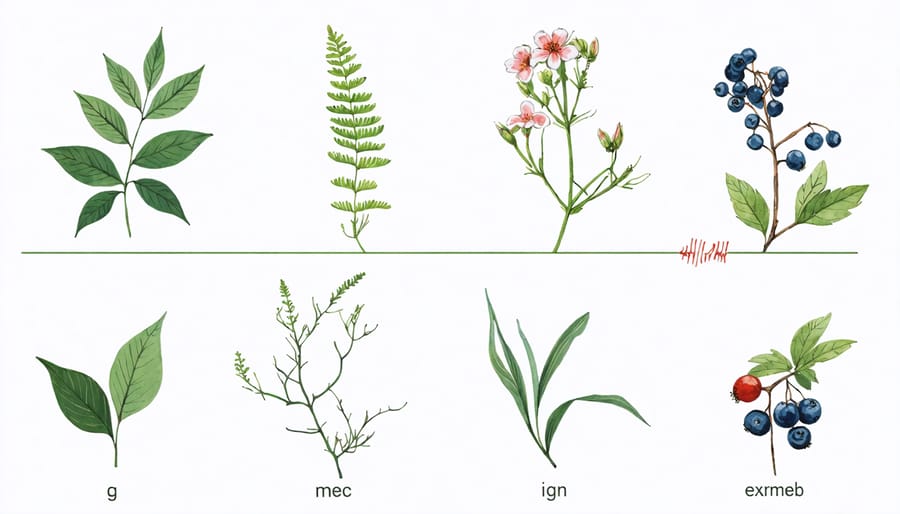
Common Symptoms of Plant Poisoning
Being able to recognize common plant toxicity symptoms is crucial for every gardener and homeowner. If you suspect someone has been exposed to a poisonous plant, watch for these warning signs that typically develop within a few hours of exposure.
The most immediate symptoms often affect the mouth and digestive system. These include burning or tingling of the lips and tongue, excessive drooling, nausea, vomiting, and stomach cramps. Some people might experience difficulty swallowing or develop blisters in their mouth.
Skin reactions are another common indicator, especially after direct contact with certain plants. Watch for redness, itching, swelling, or the development of a rash. These symptoms might appear immediately or take several hours to develop.
In more serious cases, you might notice breathing difficulties, changes in heart rate, or severe headaches. Some people may become dizzy or disoriented, while others might experience muscle weakness or tremors.
Remember, symptoms can vary greatly depending on the plant involved and the type of exposure (whether the plant was touched, eaten, or otherwise ingested). While not every exposure is an emergency, it’s always better to err on the side of caution. If you notice any of these symptoms, especially in children or pets, contact your local poison control center or seek medical attention immediately.
Safe Gardening Practices
Garden Planning and Plant Placement
Strategic placement of toxic ornamental plants is crucial for creating a beautiful yet safe garden environment. When planning your garden, consider designating specific areas for potentially harmful plants, keeping them away from high-traffic zones, children’s play areas, and pet spaces. Raised beds and bordered sections can create natural barriers while adding visual interest to your landscape.
For gardens frequented by children or pets, consider placing toxic plants in elevated containers or hanging baskets, making them less accessible. You might also opt to create a dedicated “look but don’t touch” garden area, clearly separated from recreational spaces. This approach allows you to enjoy beautiful but potentially dangerous plants like foxgloves and lily of the valley while maintaining safety.
If you’re concerned about toxic plants, there are numerous non-toxic alternatives that offer similar aesthetic appeal. Instead of oleander, try planting hardy hibiscus; replace toxic delphiniums with safe varieties of campanula or bellflowers. Remember to label your plants clearly, especially if you’re growing both edible and ornamental species in the same area.
Consider creating plant zones based on risk levels, with the most toxic specimens placed in less accessible areas of your garden. This thoughtful arrangement not only promotes safety but also adds depth and interest to your garden design while protecting your loved ones.
Protective Measures
While ornamental plants can add beauty to our gardens, it’s essential to handle toxic varieties with proper care and attention. Start by wearing protective gear like gardening gloves whenever working with potentially harmful plants, and make sure to practice safe gardening techniques during maintenance.
Create clear boundaries around toxic plants by placing them in designated areas away from high-traffic zones, especially where children and pets play. Consider using physical barriers or raised beds to limit accidental contact. Label your plants clearly, not just for your reference but also to help others identify potentially dangerous species.
Educate family members, particularly children, about which plants are unsafe to touch or eat. Make it a fun learning experience by creating a garden map together, marking safe and unsafe areas with different colors. Teach them the “look but don’t touch” rule for certain plants and explain why some beautiful flowers need to be admired from a distance.
Keep emergency contact numbers readily available, including your local poison control center. Store garden tools separately when used for toxic plants, and always wash your hands thoroughly after gardening. If you’re hosting guests or have frequent visitors, consider posting gentle reminders about toxic plants in your garden space.
Remember to regularly check for damaged or fallen plant parts and dispose of them properly to prevent accidental exposure. When pruning or maintaining toxic plants, work on calm days to avoid wind-blown particles and wear appropriate protective clothing.
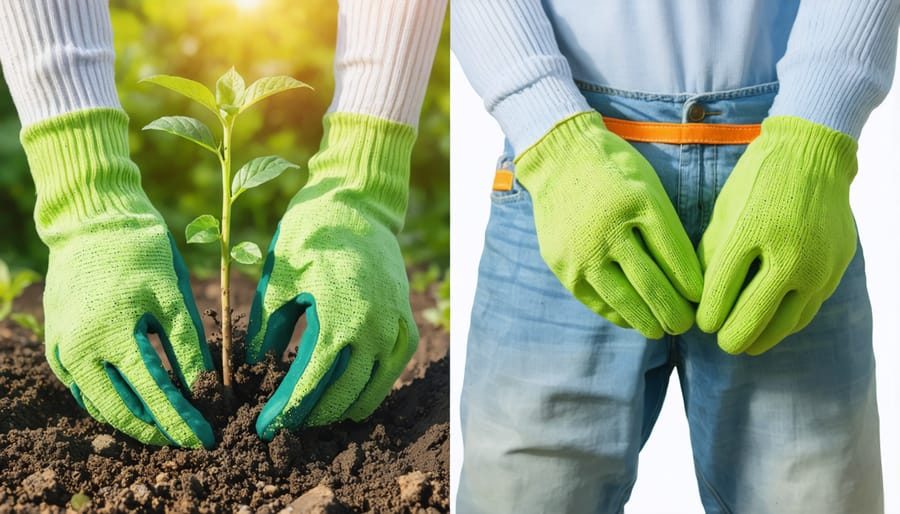
Safe Alternatives
Creating a beautiful garden doesn’t mean compromising on safety. Many non-toxic ornamental plants offer the same visual appeal as their poisonous counterparts. For those seeking alternatives to toxic favorites, consider African violets or Christmas cactus instead of poisonous holiday plants like poinsettias. These safe options provide vibrant colors and interesting textures while being perfectly harmless to children and pets.
Looking for climbing plants? Replace potentially dangerous wisteria with climbing roses or clematis varieties. These stunning climbers create the same dramatic effect without the risks. In place of toxic lily of the valley, try lily turf (liriope) or sweet woodruff for similar ground-covering capabilities and delicate flowers.
For dramatic foliage similar to elephant ears or caladiums, consider growing safe alternatives like Boston ferns or prayer plants. These provide lush, tropical appeal without any dangerous compounds. If you love the look of foxglove, try growing safe substitutes like snapdragons or delphinium for similar vertical interest and colorful blooms.
Want striking berries in your landscape? Instead of toxic holly or yew, plant winterberry holly (Ilex verticillata) or beautyberry. These produce gorgeous berries that add winter interest without posing risks to curious visitors. For container gardens, safe options like calibrachoa, begonias, and petunias offer endless color combinations and growing possibilities.
Remember, these alternatives aren’t compromises – they’re equally beautiful choices that let you garden with complete peace of mind.
Emergency Response
If you suspect exposure to a toxic ornamental plant, it’s crucial to act quickly and calmly. First, remove any remaining plant material from the person’s mouth, skin, or clothing. For skin contact, thoroughly wash the affected area with lukewarm water and mild soap for at least 15 minutes. If the plant material was ingested, do not induce vomiting unless specifically instructed by a medical professional.
Immediately call your local poison control center or emergency services. Have important information ready, including the plant’s name (if known), the amount exposed to, and when the exposure occurred. Take a sample or photo of the plant if possible, as this can help with identification and treatment.
For eye exposure, flush the eyes with clean water for at least 15 minutes. If breathing difficulties occur, move to fresh air and seek immediate medical attention. While waiting for help, keep the affected person comfortable and monitor their symptoms.
Remember to save the plant’s label or take detailed notes about its appearance for medical professionals. Keep emergency numbers, including your local poison control center, programmed in your phone and posted in a visible location. The best approach is always prevention, but being prepared for emergencies ensures quick and appropriate response when needed.
Always follow up with a healthcare provider, even if symptoms seem mild, as some plant toxins can have delayed effects.
Creating a beautiful garden is an exciting journey that allows us to express our creativity and connect with nature. While many stunning ornamental plants can enhance our outdoor spaces, we must approach garden design with a thoughtful balance of aesthetics and safety. Remember that a truly beautiful garden is one that not only delights the eyes but also provides a secure environment for everyone who enjoys it.
By being informed about potentially toxic plants and implementing proper safety measures, we can continue to cultivate magnificent gardens while protecting our loved ones, pets, and visitors. Consider creating designated “safe zones” in your garden where children and pets can play freely, and clearly mark or separate areas containing poisonous plants. Educational signage can serve both as a safety reminder and an interesting talking point for garden visitors.
The key is not to fear these beautiful but potentially harmful plants, but rather to approach them with respect and knowledge. Many experienced gardeners successfully incorporate toxic ornamentals into their landscapes through careful planning and placement. By staying informed, using proper handling techniques, and maintaining clear communication with family members and guests about plant safety, you can create a garden that is both breathtaking and secure.
Let your garden be a source of joy and pride, knowing that you’ve taken the necessary steps to ensure it’s as safe as it is beautiful. After all, the most rewarding gardens are those that can be enjoyed with peace of mind by everyone who visits them.

